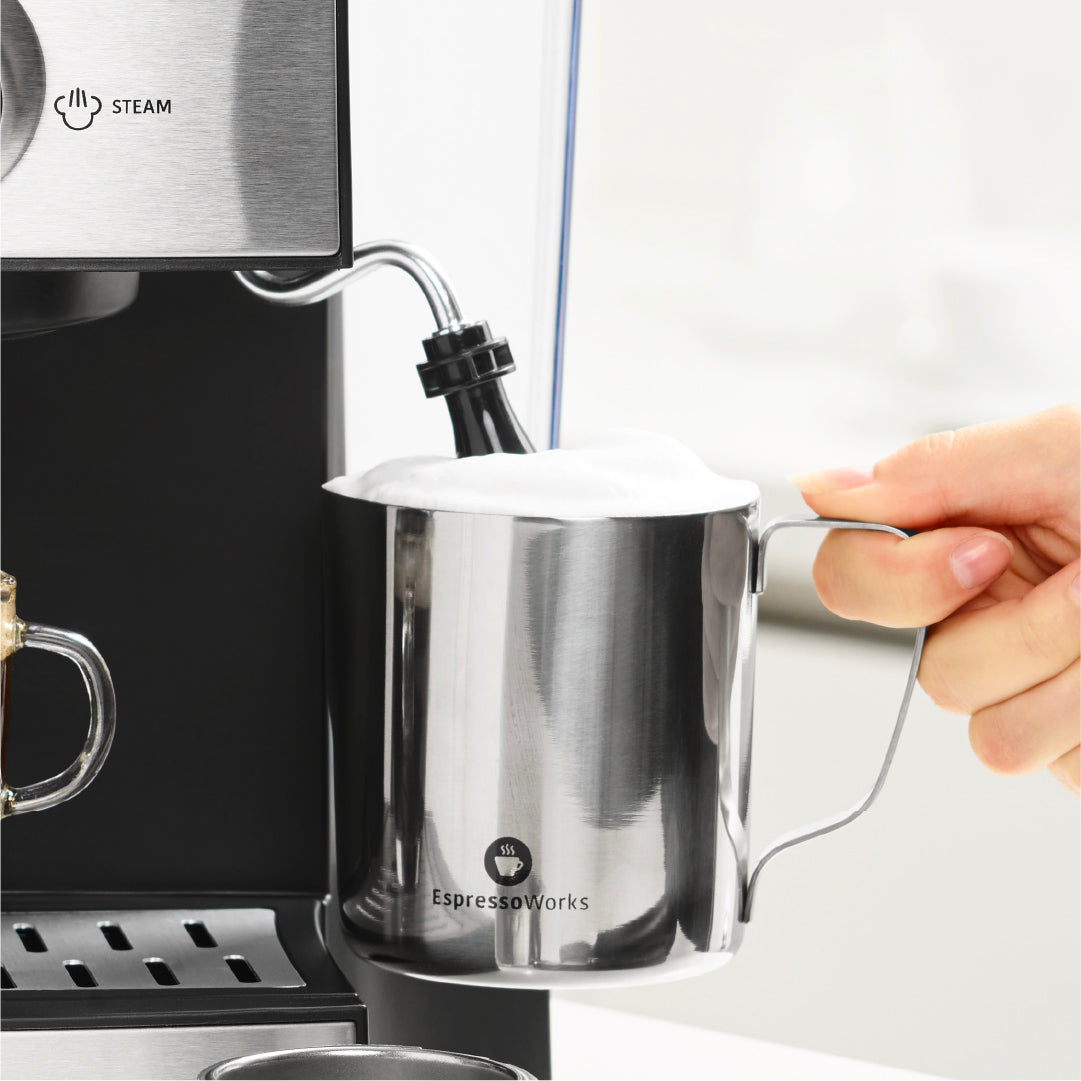
Espresso is a prime ingredient of a wide range of gourmet coffee beverages, from cappuccinos and lattes to mocha drinks. The quality of the espresso and the milk can mean all the difference between whether those drinks are superb or merely adequate. And in order for baristas to go that extra mile, they need the right temperature — which means having the right equipment.
What is a thermoblock?
In terms of temperature, the sweet spot for brewing the perfect cup of espresso is 199F/93C — and one way to achieve that is with an espresso machine that uses a thermoblock, which is a metal bar within an espresso machine that includes elements for heating the water and a pipe for that water. When the water makes its way through that pipe, it receives heat from the thermoblock and comes out at the temperature needed. Although the water isn’t interacting with the thermoblock for very long, it can reach temperatures hot enough for dry steam to be generated.
How do traditional espresso machines heat water?
Boilers:
The boilers used in espresso machines have evolved over the years. Before the advent of electric espresso machines, the original espresso makers of the late 19th Century used stainless steel boilers that were heated by open flames. But as technology evolved, so did boilers. In Italy during the 1920s, Giovanni Achille Gaggia invented an electric lever-operated espresso machine — and Gaggia’s machines used a lever-operated piston rather than steam pressure.
Heat Exchangers:
The heat exchangers in espresso machines were developed for a special purpose: overcoming the limitations of single boilers, and they were named heat exchanger systems because the boiler only heats water for the steam side of the machines. With these heat exchanger systems, a copper line is coiled through the heated water — and as the water makes its way through that line, it acquires heat from the steam reservoir and reaches a temperature that is right for brewing espresso.
Double Boilers:
When espresso machines have double boilers, two separate heating units are used: one for steam, and the other for espresso. The advantage of double boilers is that when coffee beverages that use milk are prepared, baristas don’t have the problem of the temperature being lowered. However, double boilers have their disadvantages, including bulkiness and long times for preheating — and because the water is kept at the same temperature constantly, they are not energy-efficient.
Thermocoils:
Although thermocoils are not identical to thermoblocks, they are quite similar and use the same basic principle: a water pipe that rapidly heats the water. The main difference between a thermocoil and a thermoblock is that a thermocoil is a one-piece unit — and as a result, it is less vulnerable to leakage. The main disadvantage of a thermocoil is the cost.
What makes EspressoWorks’ thermoblock system superior?
EspressoWorks’ advanced thermoblock system is as efficient as it is user-friendly, enabling baristas to brew first-rate espresso and gourmet coffee drinks quickly and easily. Ease of use is a major part of the thermoblock system’s appeal: just switch on EspressoWorks’ machine, and within 45 seconds, you are ready to start brewing. EspressoWorks’ advanced thermoblock system makes brewing coffee simple, uncomplicated and hassle-free, but with EspressoWorks, ease of use does not come at the expense of quality. Whether one is craving cappuccino, a latte or simply a shot of espresso, EspressoWorks’ advanced thermoblock system yields first-rate results without any hassle.
EspressoWorks’ 10-Piece Espresso & Cappuccino Maker Set: Black features 2 premium double-walled espresso glasses, 2 double-walled cappuccino glasses, a tamper, a measuring spoon, a 120-volt electric coffee grinder, a state-of-the-art portafilter, single and double shot baskets and an easy-to-understand Quick Start Guide.
How to take care of your thermoblock system
One thing that can shorten the life of an espresso machine is the accumulation of calcium deposits, which are also known as “scale.” The type of water one uses can play a key role in how soon calcium deposits develop: hard water can cause calcium deposits to develop more quickly, but scale doesn’t show up as quickly when soft water is used. Even with soft water, however, calcium deposits will accumulate eventually. Therefore, it is crucial that baristas descale their espresso machines as soon as they suspect that calcium deposits are starting to accumulate — and descaling products is an efficient way to tackle calcium deposits before they damage a machine.
Another important part of keeping an espresso machine running smoothly is avoiding leaking. This means making sure the machine’s gaskets are still operating efficiently.
With proper maintenance, however, EspressoWorks’ advanced thermoblock system allows baristas to make high-quality coffee drinks repeatedly without hassle or worry. Some coffee lovers wrongly assume that making gourmet coffee beverages has to be complicated and labor-intensive, but with EspressoWorks’ thermoblock technology, convenience and first-rate coffee drinks go hand in hand.









Share:
The Effect of Temperature on Coffee
3 Simple and Chocolatey Espresso Brownie Recipes (including Vegan options)